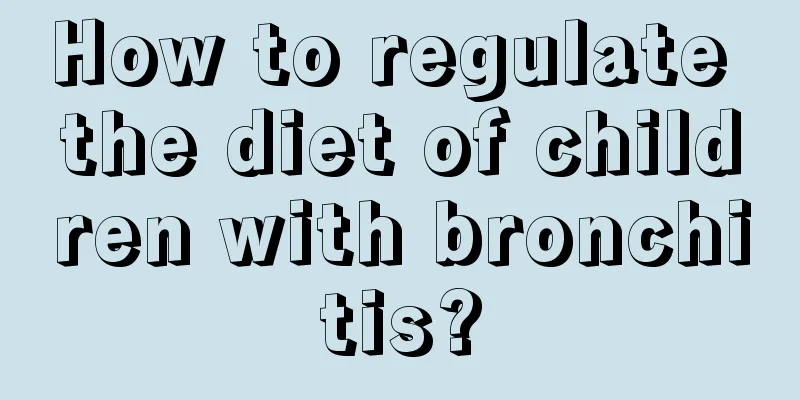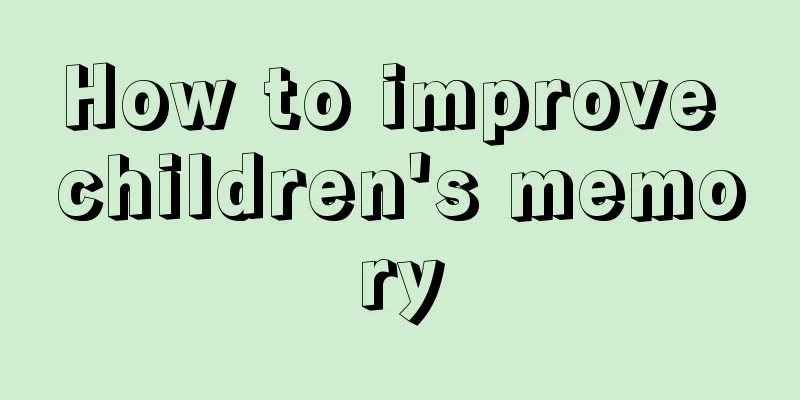What to do if your child has a sore throat

|
What should we do if our child has a sore throat? This question must be taken seriously. Here are the answers to your question: Bronchitis is very common in children, mostly secondary to upper respiratory tract infection. At the beginning of the disease, there are symptoms of upper respiratory tract infection, such as nasal congestion and runny nose, followed by intermittent dry cough. At the beginning of the disease, respiratory secretions increase, and the cough is accompanied by phlegm. The phlegm is initially sticky and quickly turns into purulent phlegm. After 5-10 days, the phlegm becomes thinner and the cough gradually disappears. When the disease occurs, there may be no fever or a fever of around 38.5°C, and the fever will subside after 2-4 days. In infancy, there is a special type of bronchitis called asthmatic bronchitis, which is more common in obese children under 2 years old, who often have a history of eczema and allergies. Asthma symptoms appear soon after onset and may recur. Generally, the symptoms disappear by the time the child is of school age. Only a few cases develop into bronchial asthma when they are older. The cause of the disease may be that the child is allergic to the infection and manifests as bronchospasm, causing wheezing. Bronchitis is a common respiratory disease in children with a high prevalence. It can occur throughout the year and reaches its peak in winter and spring. When suffering from bronchitis, children often have varying degrees of fever, cough, loss of appetite, or vomiting, diarrhea, etc. Younger children may also have symptoms of bronchiolitis such as wheezing and gasping. Although a small number of children may develop bronchopneumonia, most children have mild symptoms and are mainly treated with medication and care at home. Parents should follow the doctor's instructions to give their children medication on time and provide good home care: 1. Keep warm: Temperature changes, especially cold stimulation can reduce the local resistance of the bronchial mucosa and aggravate bronchitis. Therefore, parents should add or remove clothes for their children in time as the temperature changes, especially cover the children with quilts when sleeping to keep the body temperature above 36.5 degrees Celsius. 2. Feed more water: Children with bronchitis will have varying degrees of fever, and water evaporation is greater, so you should pay attention to feeding the child more water. It can be supplemented with sugar water or sugar and salt water, or with rice soup or egg soup. The diet is mainly semi-liquid to increase the water content in the body and meet the body's needs. 3. Adequate nutrition: When children suffer from bronchitis, they consume a lot of nutrients. In addition, fever and bacterial toxins affect gastrointestinal function and cause poor digestion and absorption. Therefore, nutritional deficiencies in the children's bodies cannot be ignored. In this regard, parents should adopt the method of small meals and frequent meals for their children, and provide them with light, nutritious, balanced and easily digestible semi-liquid or liquid diets, such as porridge, cooked noodles, egg custard, fresh vegetables, fruit juice, etc. 4. Turn over and pat the back: When the child coughs and expectorates, it indicates that the secretions in the bronchial tubes have increased. In order to promote the smooth discharge of secretions, nebulizer inhalation can be used to help expectorate, 2-3 times a day, each time for 5-20 minutes. If it is an infant, in addition to patting the back, you should also help the child turn over once every 1-2 hours, so that the child remains in a semi-recumbent position to facilitate the discharge of phlegm. 5. Reduce fever: Children with bronchitis usually have a low-to-moderate fever. If the body temperature is below 38.5 degrees Celsius, there is generally no need to give antipyretics. Treatment should focus on the cause of the disease to solve the problem fundamentally. If the body temperature is high, older children can be cooled physically, such as by applying a cold towel to the head or bathing with warm water. However, this method is not suitable for young children, and medication should be used to reduce the temperature if necessary. 6. Maintain a good family environment: The child’s room should be warm, well ventilated and lit, and the air should have a certain humidity to prevent excessive dryness. If there are smokers at home, it is best to quit smoking or go outdoors to smoke to prevent the adverse effects of smoke on the child. I believe that after reading the above text, everyone should understand what to do when a child’s throat is inflamed. The editor also wishes that all your babies can grow up healthy and happy. At the same time, parents should always pay attention to the growth of their babies so that when the baby becomes symptomatic, the problem can be solved as soon as possible. |
<<: What are the ways for young girls to enlarge their breasts?
>>: Causes of long-term constipation in infants
Recommend
What is the age range for children to develop rebellious psychology?
Parents often encounter situations where their ch...
Why are children afraid of the dark and timid? What should parents do?
Very young children are afraid of the dark and ha...
The reason why the forehead of a newborn is dark
In fact, there are still many problems for newbor...
Treatment of dry eyes in children
I wonder if mothers have noticed that their child...
Hand, foot and mouth care
Hand, foot and mouth disease is also a common ski...
What are the symptoms of precocious puberty?
Many children will have some symptoms of precocio...
How to treat a child's cold, fever and headache?
Children are the apple of every parent’s eye. As ...
What should I do if my child has black spots on his teeth?
It is not normal to have black spots on teeth, bu...
How do children show signs of autism?
Autism is a relatively common disease. Once a chi...
Methods to relieve persistent high fever in children
There are many common diseases in children. When ...
What to do if baby has herpes in throat
Many people may think that herpes only appears on...
What is the cause of the red bloodshot eyes?
Everyone knows that eyes are the windows to the s...
The manifestations of autism, three aspects to tell you!
Autism, also known as autism in clinical practice...
What causes bad breath in 8-month-old babies?
Everyone may think that bad breath is something t...
Can children eat pomegranate seeds?
For children, it is okay to eat some pomegranates...









